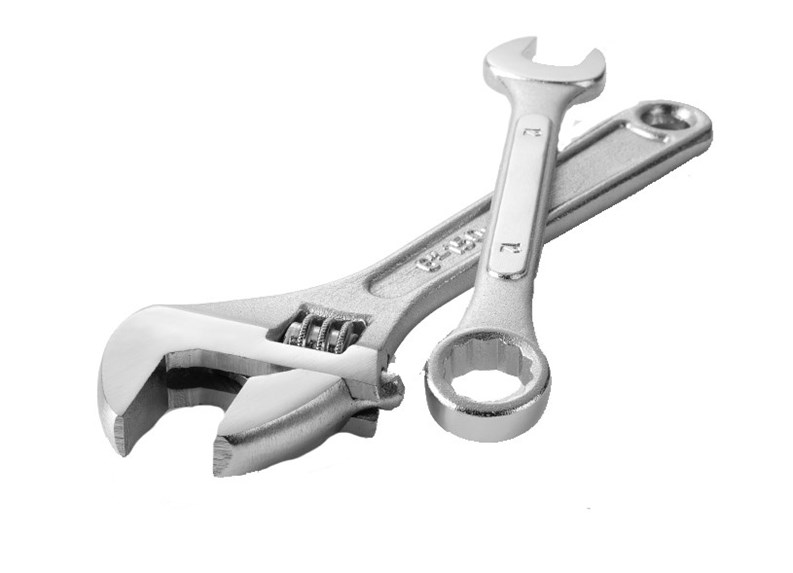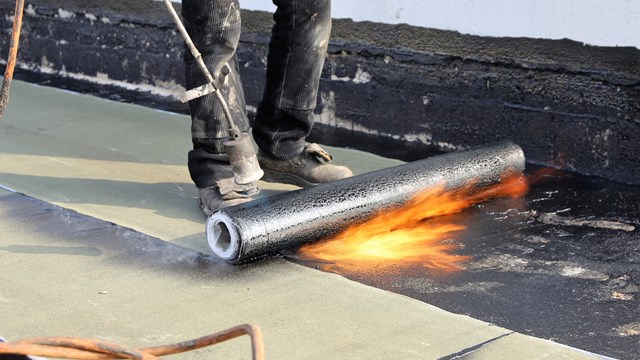Many boards and managers make extravagant efforts to spruce-up the frontages of their buildings with costly landscaping, graffiti removal, and entrance renovations — but it’s an uphill battle. As many a harried manager or put-out shareholder will tell you, there are plenty of co-op and condo buildings in the city that always seem to be stuck looking tawdry and down-at-heel because of the proliferation of sidewalk clutter.
And “sidewalk clutter” can be almost anything. On some blocks, it’s the accoutrements of low-cost marketing and so-called street furniture that are the problem: street vendor tables, club flyers scattered across the sidewalk, and a growing tide of plastic and metal newsracks competing for space with payphone kiosks and overflowing garbage cans.
Having the front of your building obscured by trash or other unsightly sidewalk detritus may just seem like an aesthetic annoyance, but the truth is that even in this era of bidding wars and sky-high selling prices, a crummy-looking frontage can impact the value of a building. Not only that, but mounds of clutter and poorly maintained newsracks may even pose a safety threat to residents.
The Anti-Mess Movement
Sidewalk clutter is made up of more than just trash — and it’s more than just ugly, though that’s the main complaint most people have with the subject comes up. In addition to being unsightly, sidewalk clutter can also pose safety risks.
To address both mounting aesthetic concerns as well as safety considerations, a group of concerned New Yorkers assembled at The Municipal Art Society (MAS) in March to learn how cities like Los Angeles, Miami and San Francisco have successfully tackled their own clutter-related issues.
The city’s governing bodies haven’t been apathetic when it comes to maintaining the appearance of streets and sidewalks. Among other measures, many community boards have joined forces with city officials to phase out enclosed payphone booths, replacing them in recent years with semi-private phone kiosks. City representatives are also working on comprehensive regulations for street vendors, and a growing number of business-improvement districts (BIDs) and community organizations are now advocating for an effective means of dealing with newsracks.
Vanessa Gruen, director of special projects for the MAS, said newsrack clutter has been a pet peeve of the art society for more than 10 years. “Have you ever seen co-op buildings and local block associations do really nice plantings around the trees and try and clean up their blocks and try and make it attractive in front of their co-op building, and then, whammo! a newsrack gets placed smack dab among the tulips? It’s very discouraging for co-op buildings and for block associations when that kind of thing happens with regularity.”
According to Liberty Rees of the East Side Newsrack Safety Committee and a co-op shareholder herself, “Today, more newsracks than ever are filthy—they’re dilapidated, covered with graffiti, plastered with stickers, and routinely filled with garbage. The consensus [at the March 1 meeting] was that the non-compliant newsrack situation in New York is completely out of control. It poses a myriad of safety problems and amounts to rampant visual pollution that debases our streetscapes and severely compromises our property values.”
Echoing Rees’ and Gruen’s sentiments is Peter Grech, president of the New York Superintendents Technical Association (NYSTA) and a super and building manager.
“I hate those news racks,” says Grech. “And as much as I am for freedom of speech, they are just ridiculous. I believe their owners should be forced to maintain them or loose them — and there should only be one or two per block, not six or seven of them in one location.”
The City’s Role
Rees says that while the city has taken some measures to improve the streetscape in many neighborhoods, and has made some attempts to define standards regarding the hygiene, aesthetics and placement of things like newsracks, legislative, regulatory and enforcement efforts here have in large measure failed. While the owners of commercial and residential buildings are issued Notices of Violation for cracked sidewalks or unkempt garbage, newsrack owners under the auspices of Local Law 23 of 2003, are merely obligated to “self-certify” that they have made their “best efforts” to maintain their racks — which can number in the hundreds.
“Current legal references to newsrack owners’ ‘best efforts’ at maintaining their equipment have proved meaningless,” says Rees, “and the convoluted legal requirements for repeated documentation and multiple instances of photographic evidence [of broken, rusted, or illegally placed newsracks] have made New York’s laws both inadequate and unenforceable.”
Rees and other streetscape beautification advocates say that there is growing sentiment that big cities like New York have a “clear and urgent” need to investigate and enact solutions to the issue of cluttered, dirty sidewalks. Possible solutions include things like standardized newsracks coated with graffiti-resistant finishes, limits on the number of racks and vendor tables allowed on a given block, more funding allocated for beautification, and stricter policing of sidewalk scofflaws.
Gruen adds that the issue has been brought to the attention of Upper West Side Council Member Gail Brewer, D-6, who is preparing draft legislation to address the newsrack situation and possibly amend Local Law 23 on the books.
According to Rees, attendees at the Municipal Art Society’s event stressed that New York City’s sidewalk space does not belong to the marketing community, but to the residents — who, as taxpayers have a right to determine how it is used.
“Newsrack owners have enjoyed the exclusive and generous privilege of using public property rent-free for the marketing, advertisement and distribution of their products,” says Rees, “but the time has come to demand that they either earn this privilege with compliance, or pay the penalty with its forfeiture.”
More than Just Messy
Sidewalk clutter and mess is ugly — but it’s also potentially dangerous.
“[Clutter is] ugly,” says Grech, “and it causes problems with removing snow or washing down the sidewalk It’s also a problem for the handicapped in maneuvering around them. Newsracks become a beacon for artists and stickers — and I really see anyone actually going and getting any info from them. So what’s the point?”
Clean-sidewalk advocates also cite security as a new and particularly compelling reason for giving property owners discretion over what occupies public space on the frontage of their buildings. Rees points out the absence of newsracks, vendor tables, and other sidewalk fixtures in front of government buildings, churches, synagogues and consulates, and says that if public buildings feel that such fixtures present a threat — by being possible repositories for bombs or other dangerous materials — private residences should have the same protection.
Some property owners also question whether the financial burden of maintaining the sidewalk in front of their building should fall squarely on them, or if vendors, newsrack owners, and others who benefit from using the sidewalk space should contribute to either maintenance costs or property taxes. They argue that if payphone owners are required to maintain their equipment properly, newsrack owners and vendors should be expected to do the same.
Doing Your Part
While the controversy over errant newsracks and general sidewalk clutter rages on, there’s plenty that individual buildings can do to keep their own frontages clean and attractive.
“Plants go a long way,” toward beautifying the streetscape in front of a residential building, says Grech. “And you can ask permission from the city to repaint the blue and green mail boxes whenever they start looking beat-up. You can also get permission to paint the light-posts, street sign posts, and fire hydrants in front of your building.”
Grech adds that any homemade signs taped to light-posts or mailboxes should be removed after a couple of days, and tape residue should be scrubbed off. First and second-floor windows should be washed regularly, and windows, doors, and other ground-level building elements should be scrupulously maintained.
“There simply isn’t enough space on New York’s sidewalks for a free-for-all,” says Rees. “If a car is illegally parked at a fire-hydrant, it’s promptly towed. If a bike is chained to a tree, the Parks Department cuts the chain and removes it. If a restaurant erects an illegal café, the Department of Consumer Affairs insists they remove it immediately. In a city of eight million pedestrians, we can’t tolerate unchecked monopolization of our sidewalks. New York is at a tipping point with regard to sidewalk navigability and appearance, and if we do not act now, we will soon have fallen over the precipice of civility and launched New York headlong down the slippery slope of urban decay.”
More information on the issue of sidewalk clutter can be found at the Municipal Art Society’s website www.mas.org and concerned New Yorkers may contact their own representatives in the City Council and its Transportation Committee.
Liberty T. Rees of the East Side Newsrack Safety Committee contributed this article. Hannah Fons is Associate Editor of The Cooperator.







Leave a Comment